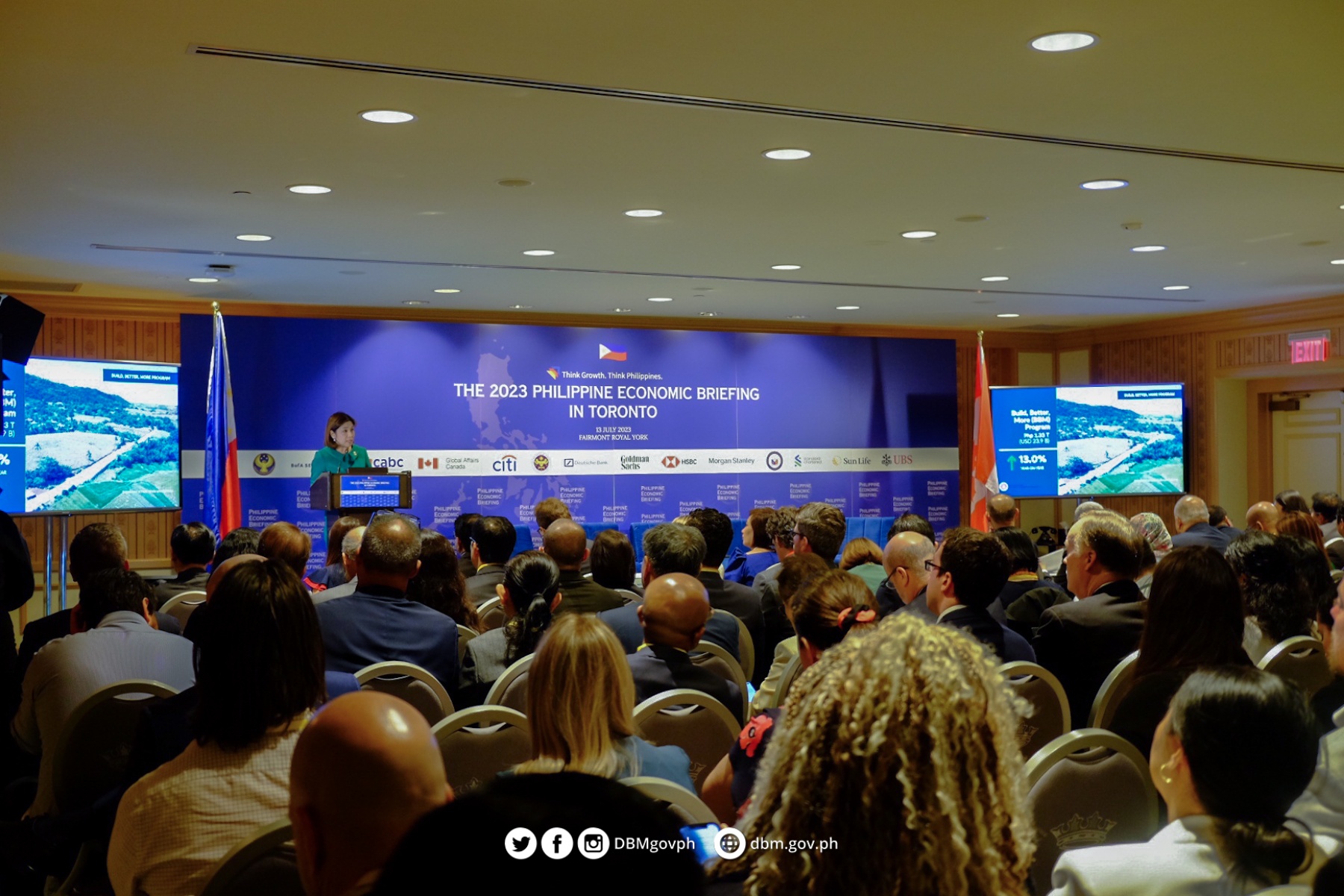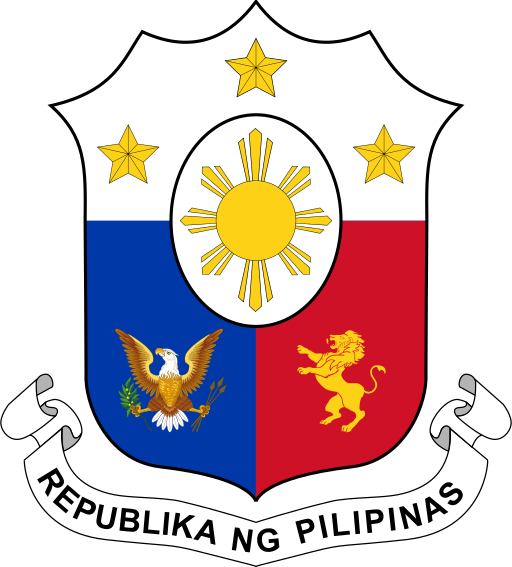
Members of the economic team, ladies and gentlemen:
Assalamu alaikum wa Raḥmatullahi wa Barakatuh.
First, I would like to thank the Philippine Embassy and our partner banks and institutions for giving us this opportunity to share the latest developments in the country's economic performance and investment opportunities, and on our end at the Department of Budget and Management, to highlight our Priority Expenditures.
Today, we bring you warm greetings and good news from the Philippines: despite global headwinds and the challenges of economic recovery after the pandemic lockdowns, we are on track with our Agenda for Prosperity.
This agenda is the Philippines’ economic transformation, bearing in mind inclusivity and sustainability. Our priority expenditures have therefore been aligned with the 8-Point Socioeconomic Agenda in the near-term and cater to the objectives under the Philippine Development Plan 2023 to 2028.
To give you an overview, the National Budget of the Philippines for Fiscal Year 2023 amounts to USD 94.8 billion which is a 4.9 percent increase from our budget in 2022 or equivalent to 21.9 percent of our GDP.
The bulk of our budget has been allocated for the Social Services sector, equivalent to roughly 38.1 percent of the national budget, to provide for revitalized education, quality healthcare, and strengthened social protection.
As mandated by the Philippine Constitution, Education—which covers about 17.0 percent of the National Budget—remains our top priority.
We have also given the Health Sector one of the most significant increases in the budget as part of our commitment to strengthen our healthcare system. This is following the lessons from the pandemic, as well as the mandate of President Ferdinand Romualdez Marcos Jr. to expand access to affordable healthcare even to the farthest regions.
Moreover, 11.7 percent of the 2023 National Budget was allocated to strengthen social protection.
In pursuit of food security, we are determined to make agriculture a driving force for growth. Hence, the Agriculture and Agrarian Reform sector was given a budgetary boost of around 29.0 percent.
Meanwhile, to sustain our country’s growth momentum and recognizing that infrastructure is the backbone of the economy, the administration’s Build, Better, More Program was allocated with some USD 23.9 billion or 25.3 percent of the national budget, and this is equivalent to 5.3 percent of GDP consistent with our Medium Term Fiscal Framework of 5 to 6 percent of infrastructure spending from 2023 to 2028.
The bulk of this infrastructure budget is intended for the development of physical infrastructure aimed at improving physical connectivity throughout the country.
Significant budgetary support was also provided for social infrastructure development, which includes the construction of school buildings, hospitals, water and power supply systems, as well as housing and community facilities.
To ensure that the Philippines becomes a viable investment destination, we are keen on improving our digital infrastructure. Some USD 434.3 million was allocated to accelerate the country’s digital transformation.
Acknowledging the importance of sustainable economic growth, we have significantly increased the budget for climate change adaptation and mitigation measures by about 60 percent compared to the previous year’s allocation. This includes investments in water sufficiency, renewable energy infrastructure, as well as alternative resources.
In promotion of genuine inclusive growth, we have automatically appropriated some USD 14.77 billion to our Local Government Units (LGUs) as part of their National Tax Allotment. This is in addition to the USD 297 million allocation that they will receive as part of our Local Government Support Fund (LGSF).
In ensuring that this inclusive growth reaches the farthest regions, a total of USD 1.34 billion has been allocated for the Bangsamoro Autonomous Region in Muslim Mindanao or BARMM as its government undergoes transition until 2025.
Looking ahead, the National Budget for Fiscal Year 2024, which we are already working on, will prioritize shovel-ready projects, investments in human capital development, sustainable agriculture and food security, and climate change adaptation and mitigation, among others. This will guarantee the continuity of gains from this year’s priority programs and contribute to securing a future-proof and sustainable economy.
Complementing these programs, we have also been working hard on key structural reforms and introducing new ones that promote sound fiscal management, a green economy, open governance, and a more efficient and lean bureaucracy. Let me cite some of these reforms.
Last month, the President issued Executive Order No. 29 directing the full adoption of the Integrated Financial Management Information System (IFMIS) in government agencies to ensure the efficient delivery of quality services to the public. This comes after Executive Order No. 170, issued in 2022, which directed the adoption of digital payments for government disbursements and collections. These twin EOs are significant strides toward bureaucratic efficiency. And soon, we hope to pass the Progressive Budgeting for Better and Modernized (PBBM) Governance Bill, which will institutionalize Public Financial Management (PFM) reforms such as the Cash Budgeting System.
We are also working on building a more agile, efficient, and responsive government workforce through the National Government Rightsizing Program. This will minimize and eliminate overlaps and duplication of functions and reduce costs, processing time, and other regulatory requirements in government transactions.
For sustainability, we are pursuing a Green Public Procurement Roadmap wherein the government will procure common-use supplies and equipment items with green specifications.
I am also delighted to share that we have secured a momentous win for open governance in the country with the signing of Executive Order No. 31 institutionalizing the Philippine Open Government Partnership or the PH-OGP. This is a testament to the country's commitment to promoting transparency, strengthening social accountability, and empowering Filipinos through open governance and people's participation.
And last but not least, we are happy to share that the Congress of the Philippines has already submitted to the President for signing into law the creation of the Philippines’ first-ever Sovereign Wealth Fund, the Maharlika Investment Fund. We are looking forward to seeing this boost economic development through strategic and profitable investments in infrastructure and other key sectors.
As you can see, the Philippines is back in business and means business. Forecasts are not only good but very good: Following our 7.6 percent GDP growth in 2022—the highest since 1976—and our sustained growth, as seen in our 6.4 percent GDP growth for the first quarter of 2023, we are now consistently recognized as one of the best-performing economies in the Asia Pacific Region.
No less than the World Bank declared that the Philippines will achieve above-middle-income status in the next two years. Fitch Ratings affirmed the Philippines' credit rating at "BBB" and, a few weeks ago, raised its outlook from negative to stable. And the S&P Global Market Intelligence forecast has declared that the Philippines is on its way to becoming a one-trillion-dollar economy by 2033. Meanwhile, for a more long-term view of our economy, PWC analysts project that the Philippines can greatly move up in the rankings, from the 28th biggest economy in 2016 to the 19th biggest economy by 2050.
And so, working toward securing a future-proof and sustainable economy, we hope to strengthen our longstanding relations and invite you to become our partner as we work toward our Agenda for Prosperity—one that would not only uplift every individual, family, and business in the Philippines but would benefit the world and generations to come.
I know that the motto of Canada is "A Mari Usque Ad Mare" or from sea to sea. With stronger business, economic, and investment ties between our countries, let’s extend Canada’s prosperity further to the other side of the Pacific, to the Pearl of the Orient Seas—the Philippines. With renewed partnership and opportunities growing fast in the Philippines, I hope to see our Agenda for Prosperity flourish from sea to sea to sea! And I hope we will be able to BEAM our sunshine to your shores and to this beautiful country as we secure a future-proof and sustainable economy.
Remember, the time to invest in the Philippines is now.
Thank you very much.
Wasalamu alaikum wa rahmatullahi wa Barakatuhu.
Maraming salamat po at Mabuhay.

